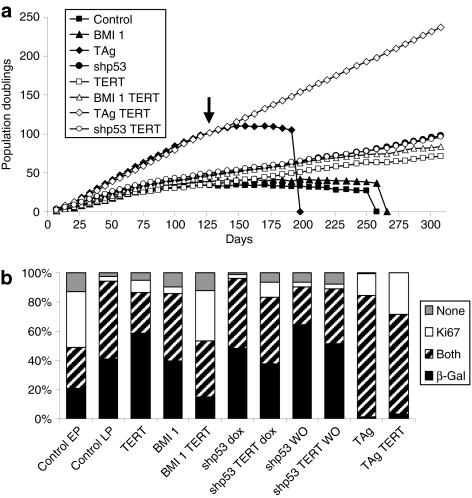Figure 1.
Proliferation and senescence properties of human olfactory ensheathing glia (hOEG) transduced with different combinations of immortalizing genes. (a) Growth curves of uninfected (control) hOEG and seven populations infected with the indicated combinations of immortalizing lentivectors. Cumulative population doublings were calculated as described in Materials and Methods from the cell number counted at each culture passage. The arrow indicates the point at which the cells were used for further analysis in Figures 1b and 2. (b) Cytochemical analysis for lysosomal senescence-associated β-galactosidase (SA-β-gal) activity, and the Ki67 antigen, a marker of cell proliferation. The bar graph shows the percentage of cells negative for both markers (gray), positive for only SA-β-gal (black) or only Ki67 (white) or both (striped) in primary cells (control) at passage 4 (early passage: EP) or passage 21 (late passage: LP) and populations at passage 21 which were originally transduced by the indicated lentivector combinations. Dox, treated with 1 µg/ml doxycycline; WO, without doxycycline (withdrawn after 87 days of culture, 16 passages).

